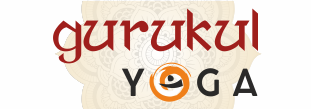In order to prepare you to teach yoga successfully, we incorporate throughout the daily classes guidance on how to teach others specially beginners, and to giving you opportunities to teach your fellow students, both in small groups and as the head of the class, Learning how to cue movement, pace class, use of props etc.
Asanas are yoga postures and the physical movements of yoga practice. Traditionally asanas are positions which make us fit and healthy in all the way. In the Yoga Sutra, Patanjali describes asana as sthiram sukham asanam means “firm, comfortable posture”. We teach the asanas of classical hatha yoga. For each posture we will show you:
– How to enter the position, the correct alignment in the final position
– Sanskrit name and the English name
– Modifications, benefits and the contraindications
– Assisting and Adjusting Asanas (Iyengar Style)
Introduction to the main body system
(A) Cardiovascular system
(B) Respiratory system
(C) Digestive system
(D) Nervous system
(E) Skeletal system
(F) Muscular system
(G) Yoga & Food
(H) Fasting
Gurukul’s approach to the practice of meditation is not the mental concentration on a particular object, rather our approach is transforming the mind. By engaging yourself with our practice you learn the patterns and habits of the mind which offers a means to cultivate positive thoughts and makes you feel peaceful and energized. Gurukul will facilitate the experience of meditation, both in your asana practice and during seated meditation.
A mantra is an instrument of the mind, a powerful sound or vibration that you can use to enter a deep state of meditation. The word Mantra has two parts, man-which is the root of the sanskrit word for the mind and tra – which is the root of the word instrument. The chanting of mantras brings about the manifestation of thoughts and desires. Our body gets an effect from Mantra Chanting in a good way. Sanskrit mantra recitation during our morning Surya Namaskar practice will bring strength to your muscles, organs, respiratory system and chakras. In addition it will allow you to experience the rhythm of meditation in motion.
“extension of the praṇa or breath” or “extension of the life force”. The word is composed of two Sanskrit words: prana, (life force particularly as the breath), and ayāma, to extend or draw out. (Not “restrain, or control” as is often translated from yam instead of Ayama). It is a term having a broad range of meanings and connotations. The sage Patanjali, in Yoga Sutras, defines Pranayama as “regulation of incoming and outgoing breath coupled with retention. The practice of pranayama is crucial for preparing your body and mind for meditation. Gurukul’s training includes the theory and practice of various types of pranayama.
Deepen your understanding of yoga by learning the philosophy from selected subjects and topics which includes:
An introduction and history of Yoga
Philosophy and aim of yoga
Three Gunas
Four paths of yoga
Description of Nadis
Five Pranas
Five Sheaths of Bodies
Ashtanga Yoga (eight limbs)
Types of Teachers and Student
The Sanskrit word kirtan generally means glorification or praise, specifically of the Supreme Being. When performed in a group setting, with musical instruments and call-and-response chanting, it is called kirtan. This kind of complete kirtan is what you’ll find here.
Kirtan is a very simple & powerful way to meditate. It’s effortless & joyful. Singing is the heart of kirtan, and no one cares what you sound like. At a kirtan concert all voices merge together to become One Voice. Lyrics in kirtans can take us away from the mind’s constant chatter a little easier. The powerful healing and transformational energies of these ancient chants can help to reconnect us to the Ever-Present and Eternal Being that lies within us all.
Chakras are centers of energy, located on the midline of the body. There are said to be seven main chakras in all which are,
Muladhara (root) chakra
Swadhishthana (sacral) chakra
Manipura (solar plexus) chakra
Anahata (heart) chakra,
Visuddhi (throat) chakra
Ajna (third eye) chakra and
Sahasrara (crown) chakra
The chakras located on the lower part of our body are our instinctual side and the highest ones our mental side. All of the chakras should contribute to a human’s overall well-being. Our instincts would join forces with our feelings and thinking. Some of our chakras are usually not open all the way (meaning, they operate just like when you were born), but some are over-active, or even near closed. If the chakras are not balanced, peace with the self cannot be achieved.
Kriya most commonly refers to a “completed action”, technique or practice within a yoga discipline, meant to achieve a specific result. Kriya is an outward physical manifestation of awakened dormant energy , such as a spontaneous body movement related to Kundalini energy flow. A Purity of the body encourages purity of the mind. Yoga has developed cleansing techniques or “ Kriyas” for the purification of the physical body and mental body.
Bandhas are energy seals and locks . Bandhas are integrated with mudra and pranayama practice. It is more connected with pranic energy and the energy flow will be directed into sushumna nadi (nerve) for the purpose of spiritual progress. Bandhas are one of those tools that restore the hormonal balance in the body and creates a relaxed and happy state of mind, Ananda Maya Chitta.
The energy which goes outward from our body while practising yogasana and pranayama is stopped by us and turned inward by bandhas. Without bandhas, pranayamas are incomplete.
Mudras are gestures or signs in yoga using the fingers, hands, eyes or other parts of the body to channelize the energy in a certain way. These are advanced practices which were kept secret by the yogis and passed on from Guru to disciple according to Gurukul tradition. Bandhas are clubbed along with Mudras in the ancient yogic texts like Hatha Yoga Pradeepika and Gheranda Samhita.
A drishti (view or gaze) is a specific focal point that is employed during meditation or while holding a yoga posture. The ancient yogis discovered that where our gaze is directed our attention naturally follows, and that the quality of our gazing is directly reflected in the quality of our mental thoughts. In yoga postures, a drishti is used to deepen the primary movement of the pose, as well as to keep the mind engaged and focused. To use a drishti while in a yoga pose, simply select the point where your gaze is naturally directed by the alignment of the posture. The use of drishtis in yoga postures is to be developed slowly over time. First one must develop and focus on the alignment of pose, then the breath, and then finally the drishti. Using a drishti is especially helpful if you are holding a posture for an extended period of time, and will be enormously helpful while practicing balancing poses.
Assisting and adjustments to yoga students is an art that requires highly developed observation skills, awareness of body mechanics and movement, intimate familiarity of the poses, and strong communications skills. The balance is to assist and adjust in such a way that students find their ultimate shapes without becoming teacher-dependent. In this carefully designed immersion into the art of assisting and adjusting you will deepen your teaching skills and bring to your students an openness with mind/body connection that advances their practice.
Every Gurukul student will lead a practicum where they will teach a practical Yoga session to their peers. An advanced teacher will supervise the class, and students will receive feedback from their peers and their supervisor and also paying attention to other yoga teaching techniques and assisting students when your peer is handling . Certification will be based on the student’s participation, teacher’s evaluation, and passing a written exam and practicum performance. A student graduating from Gurukul is empowered to teach Hatha Yoga classes consisting of the specific asanas they were taught.









